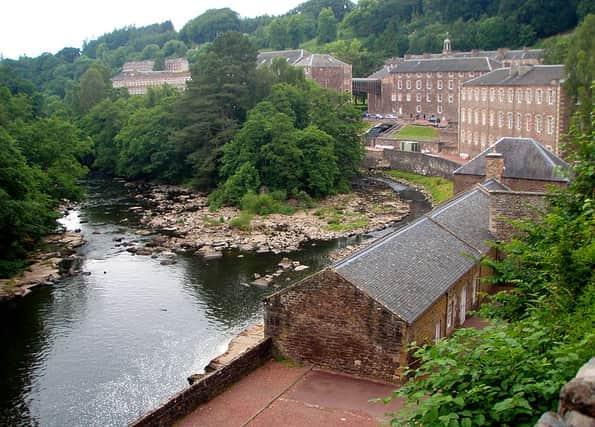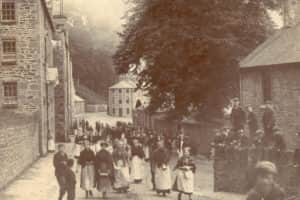David Dale: The founder of New Lanark


New Lanark started life in 1786 as a humble cotton mill - one of hundreds opened across Scotland and the north of England in the late 18th century - but now enjoys a reputation as one of the world's best known industrial heritage sites.
The village, a short distance from the historic county town of Lanark, was both a successful business and an epitome of utopian socialism. Eighteenth-century Scotland was an age of cruel mill bosses. New Lanark, however, offered fair wages, affordable food, free health care and education for all villagers. Corporal punishment and child labour were ruled out.
Advertisement
Hide AdAdvertisement
Hide AdNew Lanark was a planned community. Workers lived in purpose-built tenements yards from the mill itself, the location of which was chosen to take advantage of the Falls of Clyde. The mill machinery was powered by the immense waterfall which has long been feted by landscape painters such as JMW Turner.


The concept of water-powered mills has been around for millennia. But the cotton-spinning machinery installed at New Lanark was a relatively new invention. The first 'Spinning Jenny' appeared in the 1760s and the machine was greatly advanced by Richard Arkwright. His new invention, known as a water-frame, helped kick-start the Industrial Revolution by transforming cotton production. Arkwright had already built several mills in his native Lancashire when he teamed up with a self-made Scots businessman, David Dale, to open New Lanark.
Dale was born in Stewarton, Ayrshire, in 1739 and earned his first money in business by selling imported linen yarns from France and Holland in Glasgow. By 1777 he was a wealthy merchant and married the daughter of the chief executive of the Royal Bank of Scotland. He soon branched into other areas of business and helped launch the city's first branch of the Royal Bank as well as founding the Glasgow Chamber of Commerce.
A pivotal moment in Dale's life came in 1784 when the Scot was introduced to Arkwright, who had been invited to Scotland with a view to opening another cotton mill in Lanarkshire. Dale shared a concern for Highlanders forced to leave their homes to find work in the central belt, and was keen to attract new employers to the area.
The meeting was arranged by Perthshire MP George Dempster and the trio walked down the steep valley from Lanark to view a potential site for the new mills. They quickly agreed on its suitability and the plan for New Lanark was born.


Work began immediately and the mill buildings were based on Arkwright’s own mills in Cromford in Lancashire. Local men were sent south for training, and New Lanark began spinning in early 1786, at which point both Dempster and Arkwright left the partnership, leaving Dale as the sole owner.
By the 1790s there were nearly 1,400 people living and working in the purpose-built industrial community and thousands of interested parties from across the country and further afield travelled to tour this unique business success story, including such notables as William Wordsworth and Samuel Coleridge.
While they were impressed with New Lanark's efficiency, what made the village truly notable was its combination of business and philanthropy. Living standards in the village were far superior to other industrial communities of the time and a priority was placed on training the workforce and educating children.
Advertisement
Hide AdAdvertisement
Hide AdDale was convinced that a healthy, well-educated workforce would not only lead to greater productivity but was a moral obligation. "It gives me great pleasure to say, that by proper management and attention, much good instead of evil may be done at cotton mills," he wrote at the time.
Robert Owen, a Welsh industrialist, was a frequent visitor to New Lanark and in 1799 he married Dale's daughter Caroline. The following year he and his business partners bought New Lanark for £60,000, payable over 20 years, and Owen was installed mill manager.
Owen would became famous for the innovative social programmes he launched at New Lanark, such as the opening of the world's first infant school in 1817. But the village's founding and its later association with improving the living conditions of workers owe a huge debt to David Dale.